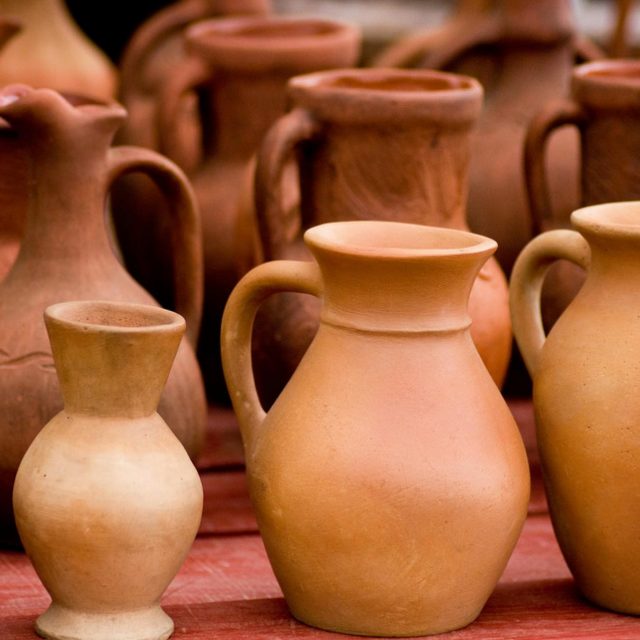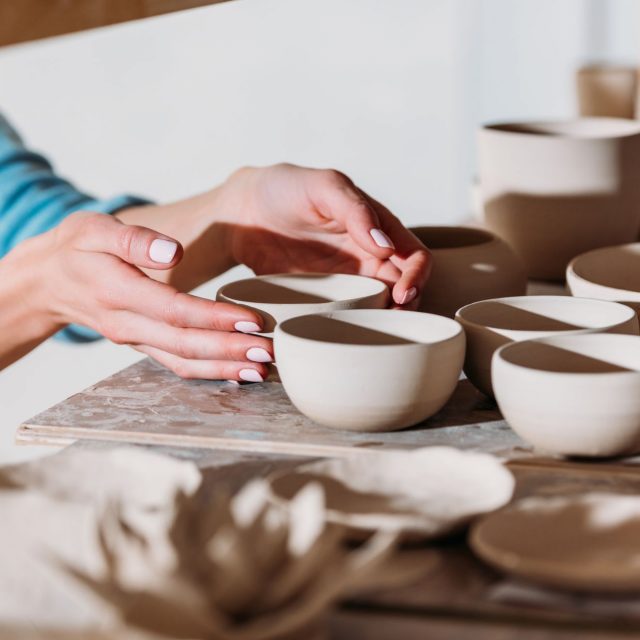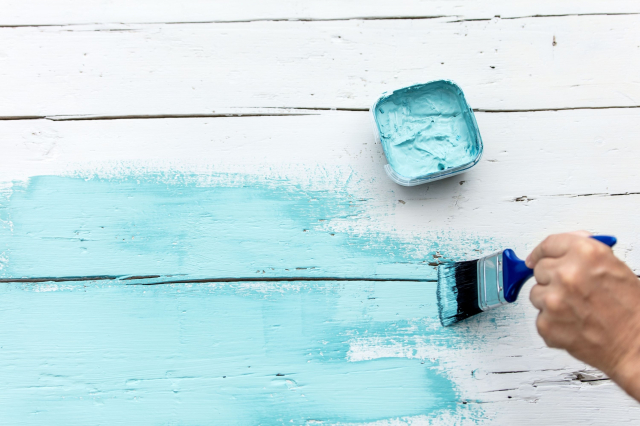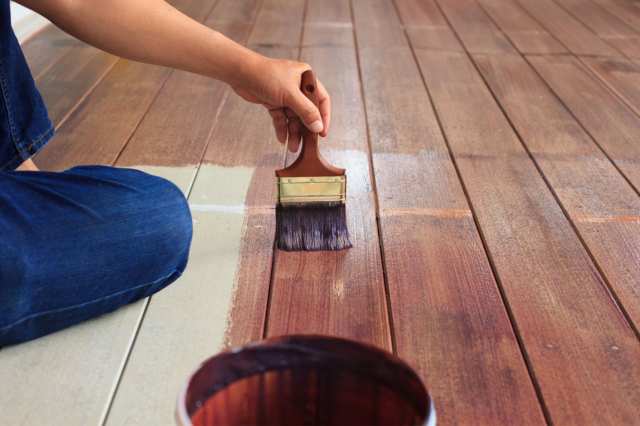How to Paint Already Fired Ceramics?
All The Tips And Trick Included
Ceramics is a centuries-old industry that predates the dawn of time.
The Venus of Dolni Vestonice is the oldest known ceramic sculpture, dating back to 28,000 BCE and discovered in a small ancient hamlet in the Czech Republic.
Ceramics is currently used not only in arts but also in home decoration.
Today it isn’t easy to imagine a kitchen or bathroom that does not use ceramic tiles in its design and decoration. This material is designed for many years of service. Still, it is no secret that fashion and tastes change over time, colors fade, and the usual interior gets boring.
Tiles can get damaged and become unusable. So there’s no surprise that you might want to update it and paint ceramic yourself.
Of course, it is easier for any customer just to buy new tiles, but if the old one is well preserved, why not just paint it at home in a different color and save money on hiring specialists?
Also, why not customize it and paint a fancy picture or pattern?
Painting ceramic or pottery with your own hands is an opportunity to partially update the interior, give free rein to your imagination, learn how to do something new, and enjoy the creative process. Let’s talk about it in more detail.
What Kind of Ceramics Is Best for Painting?
Table of Contents
Ceramic has come to apply to any sort of pottery, whether it is glazed or unglazed, painted or unpainted. Greenware is the purest type of pottery. This term refers to clay that has been air-dried but not fired.
Greenware is exceptionally fragile and has a short lifespan, making it unsuitable for coloring and art. Furthermore, decorating non-kiln-fired pottery would be difficult because, even if paints for pottery were available, they would not adhere to the clay’s exterior.
Bisque fired clay, or unglazed pottery, is clay that has only been fired once in a kiln. These ceramics are the most superb option for applying paint. When the paint soaks into the pores of the bisque cooked clay, the best adhesion develops. Bisque-fired clay’s porous nature makes it suitable for adhesion when the paint soaks into the pores.
Bisque firing adds structure and strength to the piece. If you want to paint on your ceramics, these are the best ones to use. Because bisque fired clay is quite porous, it is better if the paint soaks into the pores for the best adherence. Acrylics absorb into bisque swiftly and scarcely leave a thin film on top of the product.
Glazed ceramics are made from clay that has already been burned and then have ceramic glazes applied before being fired again at a higher temperature. The high heat transforms the glazes into glass-like finishes that give longevity to the item.
Glazed pottery is waterproof, which means it can withstand water, heat, and cold, as well as being dishwasher safe.
Artist acrylics should not be used as a substitute for ceramic glazes or burned in a kiln. Melting acrylics is hazardous to one’s health. Acrylics stick to glazed ceramics poorly and can easily be scratched off with your fingernail.
This is why we do not advocate painting on glazed ceramics, particularly tiles, because the paint will not adhere permanently and will be scratched.

via crello: Forewer
Painting Ceramics and Pottery
According to the application method, coatings for ceramics to paint are divided into underglaze and overglaze. In the first case, the composition is applied before firing.
Therefore, it is under the glaze, and in the second case, it is used on products that have already been fired. For the paint to adhere to the ceramic surface, binders such as glycerin, sugar, and other components are added to the material.

Acrylic paint on glazed ceramic
Glazes are particular substances that, when fired, turn into a transparent, durable layer that protects the product from the external environment.
For painting ceramics with glaze, translucent and opaque, multi-colored, glossy or matte, with a metallic sheen, drip compositions or crackle are used.
For household ceramics, faience, and majolica, low-melting glazes are used, and for porcelain, mostly refractory.
Glazes are perhaps the most widely used method of working with ceramics today. This approach has been used for thousands of years.
Because the materials tend to become molten within the kiln, it takes a skilled hand to get the desired results. As a result, some designs may sag, break, or vanish totally.
Overglaze works with a brush. Apply a drawing over the glaze. After firing, the paints are fused with the base. The drawing acquires clarity, bulge, and brightness.
Overglaze painting of ceramics makes it easy to correct errors if they appear during work.
It is worth considering that paints may change color after exposure to high temperatures. Experts advise making a palette for control, on which the necessary paints will be numbered and fired. This will avoid disappointment in the finished product;
Underglaze pattern is applied to a porous raw surface after the first firing (by salvage).
You can paint the product before the first firing, after drying in the air. The glaze is applied over the pattern, and only then is it fired.
Such painting is more durable than overglaze painting.
Underglaze painting of ceramics requires high artistic skill since the paints are absorbed into the pores of the clay, and it is almost impossible to correct the mistake.
This technique is applied to ceramics; it produces a similar look to that of a watercolor painting. It’s thin enough to apply colors that won’t fade and won’t make the surface too heavy.
Using acrylic paint on ceramic
Acrylic paints are versatile, quick-drying paints that can be used in thin washes like watercolors or directly from the tube like oils.
Acrylics, unlike watercolors, dry permanently, allowing you to paint over them without damaging previous washes. They also clean up with water and dry rapidly, unlike oil paint.
Acrylic paints can be kept workable by keeping them wet.
Suppose the pottery or ceramic product wasn’t intended for actual usage. In that case, you could use almost any paint to achieve the desired effect. We recommend using acrylic paint.
The only drawback is the potential for flaking and peeling, which means you’ll need to seal it to protect the result. If you don’t have any paint on hand, consider fingernail polish instead.
If your product is intended exclusively for decoration, your best choice is to paint that does not require baking. Paints are far from the only tool for painting ceramics.
There are also very convenient acrylic contours that allow you to draw the minor details and even ceramic markers, which an adult and a child can handle because they are extremely similar to the good old felt-tip pens.
If you still decide to paint ceramics with paints, you should pay attention to the choice of brush. The most suitable pile for this is synthetic, and the type of brush depends on how you see the product.
Medium-sized flat brushes are ideal for painting, and fine brushes are ideal for fine lines.

via crello: d.travnikov
How Do They Glaze Ceramic?
Glazes have a massive range of effects. Therefore, when decorating ceramics and applying pictures to products, you can use these effects, which are the main “interest” of professional ceramists.
It should be noted here that the glaze is a vitreous material and has the same composition as glass: feldspar, borax (sodium decahydrate tetraborate), quartz, lead, or tin oxides.
The difference between glaze and glass is only in the firing temperature and additives that bring its coefficient of thermal expansion closer to that of the shard.
Each ceramic workshop is always a chemical laboratory. Each firing is the interaction of a whole range of chemical elements with a catalyst in the form of temperature. That is why the selection of glazes is an essential task, and records of “recipes” for incredibly successful combinations are unique information.
So, ceramic glazes. What is it? Initially, any paints are pigments based on metals, oxides, or complex organic elements. The only difference is in the binder filler. For example, in gouache, it is glue and honey. In tempera, it is an egg, casein, oils, or synthetic binders that can also be used.
Organic paints are unsuitable for ceramics since all organic matter burns entirely during firing. Therefore, ceramists mainly use metal oxides and salts as pigments and various silicates as the base of glazes.
Important: floor tiles are not recommended to be decorated with paintings; they will not withstand repeated friction.
How to Paint Ceramic Tiles in Bathroom
Preparation, as with other painting projects, is the key to success. To prepare a tile for painting, follow these steps:
- Clean the tile with an abrasive bathroom cleaner to remove any grime, mildew, or soap scum. After cleaning, wash off the surface with a clean, moist sponge to eliminate any residue, then let it dry completely.
- To remove the gloss from the glazed surface, lightly sand the tile with fine (180-220 grit) synthetic grain sandpaper, such as silicon carbide or aluminum oxide. Sanding with an orbital sander is both faster and more effective than hand sanding.
- Remove any dust from the surface by wiping it down with a moist towel and allowing it to dry before painting.
Apply one to two coats of latex paint to a bonding primer designed to cling to surfaces like tile. Allow the primer to cure for the time specified, then apply two coats of acrylic latex wall paint on top.
Apply two coats of a two-part epoxy paint formulated for tile and other difficult-to-paint surfaces. Before usage, carefully follow the recommendations and allow the appropriate drying time. It’s possible that the number of colors available for epoxy paint is limited.

Acrylic Paint on Ceramic
The procedure for painting ceramic tiles is divided into the following stages:
Cleaning and degreasing. Includes treatment with detergents using a hard sponge. You can degrease the tile by pouring sand on the sponge and rubbing the surface well or wiping it with vodka or alcohol.
The next step is grinding. It is necessary to remove the topmost smooth layer of the tile. It can be made by treating the surface with sandpaper or a bar for sharpening kitchen knives.
Next, you need to apply a primer. This is necessary to ensure good adhesion of paints to the tile’s smooth surface. It is recommended to use epoxy primers with high adhesive properties; you will need a moisture-resistant primer for tiles in the bathroom.
It should be remembered that it is possible to paint the tiles only after 24 hours after the primer has completely dried.
The paint is applied in 2-3 layers. Full staining of the tile is done with a foam roller or sponge.
Before applying the next layer, you need to wait until the previous one dries. After each application, the roller should be squeezed well.
The stencil drawing is painted over with a special soft brush. It is fixed with temporary fixation aerosol glue or ordinary tape to prevent the stencil from moving during operation.
The brush must be held strictly perpendicular to the tile’s surface while the paint is applied with neat strokes. Accidental drops of paint should be removed with a cotton swab, the blunt end of a match, or a toothpick.
At the final stage, apply waterproof varnish.
After the paint has completely dried, the tile can be safely washed without fear that the pattern will come off or fade.
It is important to remember that painted tiles should dry for at least 24 hours, and it can take up to 2 weeks for complete drying.

via crello: IgorVetushko
How do you paint already glazed ceramics?
Make sure you use 150 grit sandpaper for sanding the entire ceramic piece.
Prepare the ceramic item by applying primer to it.
To paint the complete ceramic sculpture, you’ll need an oil-suited paint brush and oil-based paint (or ceramic paint if you can locate it).
Allow the ceramic piece to air dry for many hours after it has been dried.
Most enamels will flake off and not attach well to the surface due to the density of the materials, especially when the porcelain glaze is applied.
Use oil-based ceramic paints or a ceramic paint specifically formulated for firing ceramics.
Despite the removal of the top layer of glaze, the remaining glaze will resist the application of new paint. To get the greatest look, apply the paint with a brush as usual and layer the paint in thin layers.
Ever wished paint sampling was as easy as sticking a sticker? Guess what? Now it is! Discover Samplize's unique Peel & Stick samples. Get started now and say goodbye to the old messy way!
Get paint samples




Frequently Asked Questions
⭐Can you fire acrylic paint in a kiln?
Artist acrylics should not be used as a substitute for ceramic glazes or burned in a kiln.
⭐How to paint bisque ceramics?
Brushes and paint can be used to decorate the bisqueware.
⭐Does acrylic paint work on ceramic?
Acrylics stick to glazed ceramics poorly and can easily be scratched off with your fingernail.
22 thoughts on “How to Paint Already Fired Ceramics?”
Leave a Reply








Hello. Could you please explain how to paint over the ceramic vase if it has decorative sculptured elements on it?
I know there’s glaze paint for ceramic surfaces, but I’m not sure whether there’s paint specifically designed for the glazed ceramic objects only.
I have a couple of lovely glazed ceramic dishes, but they’re not painted. So, I thought I might decorate them. Can you paint over glazed ceramic? Does anyone know?
Of course, glazed ceramic can be painted! But first, you must apply a coat of primer. It will ensure the paint adheres properly.
How to fix paint on ceramic if it started peeling off?
I’d say you should figure out why it started peeling off. But generally, you should remove the old layer of paint and reapply the new one.
Does nayone know how to repaint old ceramic figurines? Mine are approximately 20-30 years old, or maybe older, which is why I’m afraid to do something wrong and damage them!
I guess you should clean them first to remove dust and dirt, and then prime. Once the coat of primer is dry, you can apply the paint you want. If the figurine itself is not damaged (e.g. cracked), repainting it should not cause any harm.
Does anyone know a good oil-based ceramic paint? Could you share the name/names of the brand, please?
Hi! I use Pebeo paint, but I’m working with decorative ceramic items (not tableware). If you want to paint cups or plates, I guess this paint might not be useful since (as far as I know), it’s not suitable for this kind of items.
Could you please explain how to paint unglazed ceramic items? I’ve just started working with clay and ceramic, so I’m not very skilled and knowledgeable about such specifics. Any help will be very welcomed!
Hi! I’m also not a pro, but I’ve been working with ceramics for a couple of years, so I can tell you that first of all, you should apply a coat of primer to your ceramic object. The primer must be specifically designed for ceramic. Priming will help the paint to adhere and be applied evenly. Also, I recommend you use a paintbrush for making ornaments since it’ll allow more accurate and finer strokes.
I’m trying myself at pottery and I’ve recently made a mug but I forgot to paint it and it is now glazed. Is it possible to paint it now on top of the glaze somehow? I really want it to have a design on it!
I’m afraid that painting on glaze won’t be successful. Glaze is very slippery (if you may say so) so the paint you use won’t be able to adhere to it properly. The design will simply wash off the second you wet the mug. You may try using acrylic paint and it will even work, but then this mug won’t be washable.
I’m new to painting ceramics and to pottery in general, but I already have one issue that I can’t solve. Is it possible to paint unglazed ceramics with watercolor? Will this paint adhere to the surface of the object?
As far as I know, you can’t use watercolor since this paint is way too watery and translucent. It will simply not be able to leave a thick enough layer of color on the surface of your ceramic item. Most likely, the design you apply will look very pale if there will be anything left at all.
Hey! I am an amateur in pottery making and decorating. Can you please advise what is the best option of paint for pottery if I’m a beginner?
Latex, acrylic, or epoxy paint can be used to paint ceramic tile or huge pieces of pottery. Epoxy paint can be used to achieve a glossy, long-lasting finish.
Is it okay to use acrylic paint on pottery before firing?
Hi! Melting acrylics is unhealthy, so we do not recommend doing it if you want to know how to paint ceramic properly.
How can you know what ceramics to paint? I can’t see the difference between glazed and unglazed pottery.
The only actual distinction between glazed and unglazed tiles is the glaze. A thin coat of liquid glass is sprayed to the top surface of the ceramic tiles after they have been fired. Unglazed ceramic tiles are less slippery than glazed ceramic tiles, although not as stain resistant.